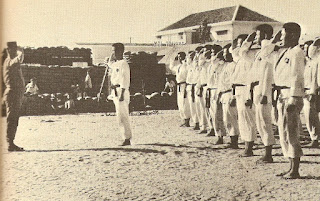by Phillip Starr
They were as tough as case-hardened steel and absolutely merciless. Both the NVA and VC were terrified of them. In fact, none of their fire bases were ever attacked – throughout the entire war! They preferred to engage the enemy at close quarters, using their hardened fists and feet to quickly dispatch their opponents.
A dear friend of mine (Mike Biggs, dec.) who served in Vietnam for three tours with Special Forces (green berets) told me that the best night's sleep he had the whole time was when he stayed in the White Horse Division's fire base. Giggling, he told me that he slept very soundly, knowing that there were no enemy troops with three miles of the place. Both the NVA and VC went to great lengths to avoid the fire bases of these units.
Mike got the chance to watch the Koreans in their early morning drills and taekwondo practice. “It was brutal”, he said. “Anyone who screwed up was kicked in the head by his Lieutenant”, Mike went on. “If they couldn't find any VC to whip, they'd fight each other!” He was more than a little impressed with their hand-to-hand skills.
Some of the members and instructors of these special divisions emigrated to the U.S., where they could make a good living teaching taekwondo. In Korea, martial arts teachers weren't held in high esteem and were near the bottom of the social ladder. Not so in America! The young Americans who trained under these early taekwondo pioneers endured very tough training, but they developed considerable skill. I remember because I knew many of them.
In fact, U.S. military personnel were stationed in Japan and Okinawa as well and many of them took up the study of martial arts. They would return home and open their schools and clubs, and train their students with the same intensity that they had endured. But with the passage of time, things changed considerably. Training became much less intense and focused. What happened?


.jpg)



















No comments:
Post a Comment